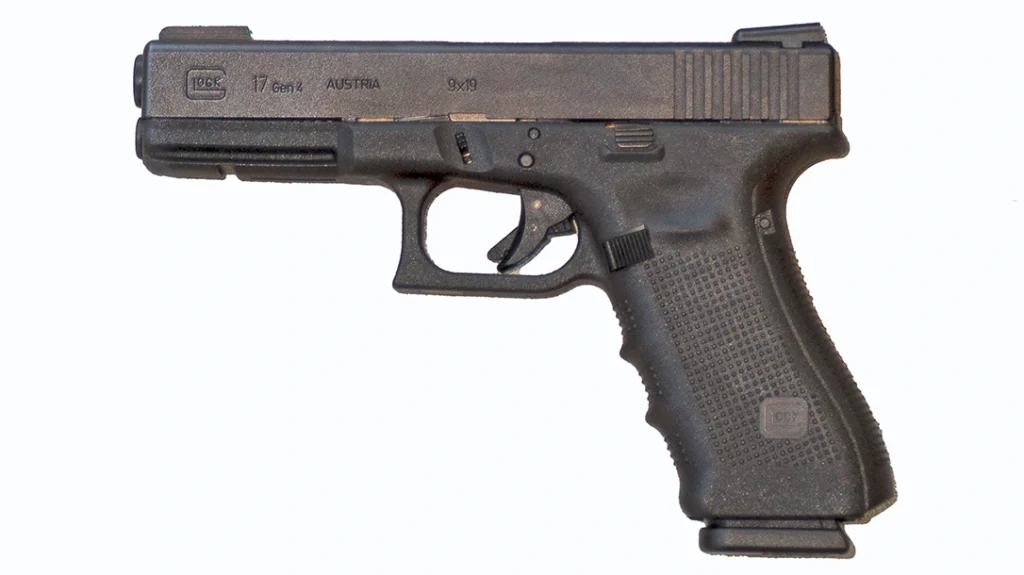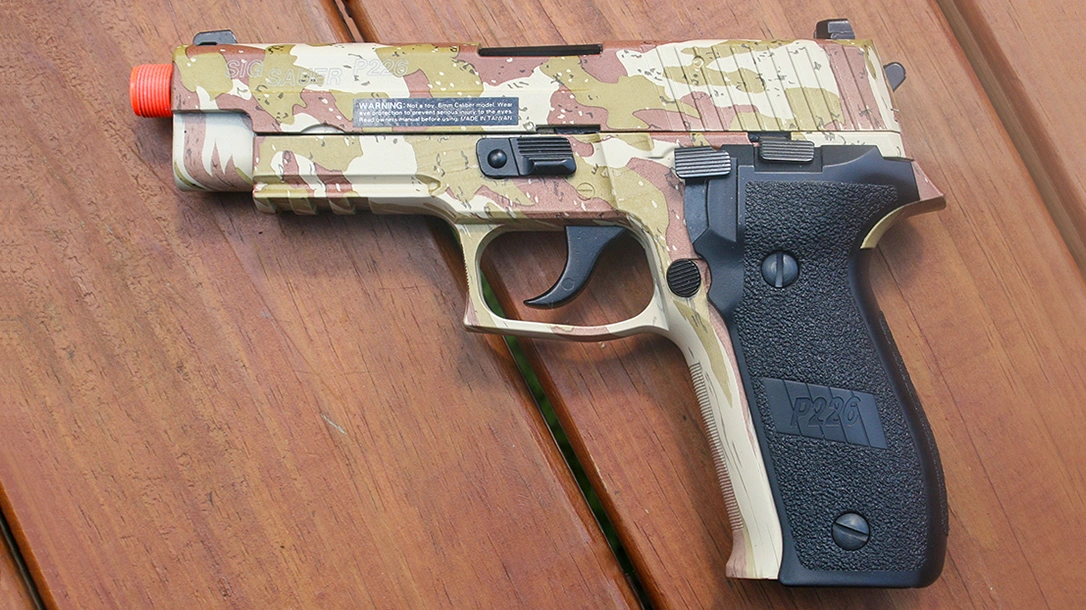The “fight or flight” response is triggered by fear. Some people enjoy creating fear in others for fun and profit. It’s fun (for them) if they’re “pranking” you. It’s profit if they’re robbing you, and their “weapon” happens to be a bluff. But when the victim fights instead of flees, well, it’s a “Darwin Award” moment for prankster and robber alike. And responsibility falls on the person who created the fear. Let’s take a look at some pranks gone wrong.
Firearm Pranks Gone Wrong
Case #1: The Jewel Heist
Case One happened in Italy in 1977. A sports superstar named Luciano Re Cicconi happened to like guns and occasionally carried one. The day came when he and a friend decided to play a joke on a jeweler friend by pretending to rob his store. They entered wearing masks, pulled real guns, and loudly announced it was a stickup.
They may or may not have known that not long before, their friend had been robbed and terrorized at gunpoint, for real. After that traumatic incident, he had armed himself.
Advertisement — Continue Reading Below
When the two masked “pranksters” flourished their guns and announced a robbery, the jeweler grabbed his own shotgun. He then ordered them to drop their weapons, even though it would have been legal to shoot them immediately. The sports star’s companion recognized the danger and immediately complied. But for whatever reason, Cicconi stayed in role.
The jeweler shot him in the chest.
The prankster’s last words were, “It was a joke!”
Advertisement — Continue Reading Below
Case #2: Harassing the Wrong Stranger
Case Two occurred more recently in Virginia. Tanner Cook delighted in posting YouTube videos of himself harassing strangers. He did so to Alan Colie, a Door-Dash driver who had a permit to carry a gun, in a shopping mall.
The video shows him backing up Colie and shoving a smartphone toward his face in a menacing manner. He believed he was about to be attacked and beaten by Cook, who was a head taller and towered over him. So, Colie drew a handgun from his pocket and shot Cook in the abdomen. The prankster survived, and the shooter was arrested.
After eight months in jail, Colie was acquitted at trial. The jury accepted his testimony that he reasonably believed he was acting in self-defense. They convicted him on a charge of discharging a weapon in a public place. However, that verdict was under re-consideration last I knew, given his acquittal on the shooting itself.
Advertisement — Continue Reading Below
Tanner Cook recovered and continued to produce his harassing videos. Some people never learn.
Case #3: Robbery Practice
Pranksters aren’t the only ones who can mimic a genuine deadly danger to the innocent. Rich Wemmer is the officer survival guru of the LAPD. He told us of Case Three, involving an off-duty Los Angeles cop who went to the liquor store to buy a bottle of wine to go with dinner.
Always scanning before he entered an establishment, he saw a man pointing a shotgun at the clerk behind the counter. He fell back unnoticed so as not to trigger a gunfight and get the clerk killed. The officer then put his hand on his Smith & Wesson off-duty gun and called in a 211 in progress.
Advertisement — Continue Reading Below
When responding officers arrived, the man with the shotgun turned out to be the owner of the liquor store. He claimed that he was role-playing, teaching a new employee what to do if the shop was robbed. He survived only because the officer in question had a cool head and a great sense of tactics.
Fake Guns and Faked Guns
Sometimes, the person who gets shot is a genuine would-be-armed robber or rapist.
They may fake having a firearm with a statement like “I’ve got a gun,” accompanied by a menacing gesture like a hand inside a coat or a finger in a coat pocket mimicking a gun barrel. Or they may have a fake gun. There are innumerable toy pistols, BB guns, and Airsoft guns intentionally manufactured to look so real they’re almost impossible to tell from a real gun.
Advertisement — Continue Reading Below
Convicted felons and prohibited persons are known to wear them and brandish them. Often, this is meant to frighten others or gain “street cred,” sort of a thug equivalent of stolen valor. The orange caps will be removed from the gun’s muzzle or painted over.
Case #4: Fake Gun, Real Robbery
In Houston, Texas, not long ago, Case Fourwas, like the Colie case—caught on video. A robber wielding what appeared to be a semiautomatic pistol entered a taqueria, cowing everyone at gunpoint and demanding their wallets. Well, he cowed almost everyone.
A diner drew his own semi-auto and shot him down. When the armed citizen picked up the robber’s gun, he could feel it was a plastic replica. He was seen throwing it at a wall in disgust, where it broke.
Advertisement — Continue Reading Below
Despite leaving the scene, the shooter, who later turned himself in, was no-billed by the Grand Jury.
Case #5: Oops! That was a Combat Veteran
An armed robber in New Hampshire became Case Five when he pointed a realistic imitation pistol at a convenience store clerk and demanded money. The clerk was a retired military combat vet who drew his own handgun and shot the robber dead.
A responding police officer stepped on the weapon to slide it away from the deceased gunman’s hand. It crunched under his shoe. Only then did anyone realize the “weapon” was a realistic plastic toy.
Advertisement — Continue Reading Below
The clerk was never arrested nor charged. The police recognized a reasonable self-defense shooting when they saw one.
Principles: Use of Force Principle
Always remember: You don’t have to be right. You have to be reasonable. The guiding light for police use of force is SCOTUS’ 1989 decision in Graham v. Connor. It said that the courts cannot apply 20/20 hindsight and must consider the “tense, rapidly-evolving circumstances” in such incidents.
While Graham was a police case, the same principle should apply to armed citizen shootings. The self-defense jury instruction in Washington State, for example, tracks closely with the wording of Graham v. Connor.
Advertisement — Continue Reading Below
Case #6: “Keep Your Hands Where We Can See Them!”
As an expert witness in such cases, I’ve run across this sort of thing multiple times. Case Six, Florida v. Alvarez, involved a man who reached for a (real) gun while officers were arresting him. He was fatally shot in the head, resulting in a manslaughter charge from then-State’s Attorney Janet Reno.
I was hired by the cop’s excellent attorneys, Roy Black and Mark Seiden.
Case #7: A Can of Spray Paint Isn’t Going to Help You
In Case Seven, another outstanding lawyer, Joe Ciarciglino, retained me for Florida v. Geohegan. A burglary suspect the officer was chasing on foot suddenly turned on him, reaching inside his coat as if to draw a gun. Officer Geoghan killed him with a single shot to the heart from his GLOCK 17. It turned out, all the suspect had in his waistband was a can of aerosol paint he had been sniffing.

In front of the trial jury in Alvarez and the Grand Jury in Geohegan, I was asked the exact same word-for-word question by the respective prosecutors: “Isn’t it possible the deceased was merely trying to frighten the officer?”
Both times, I gave the exact same word-for-word answer: “He apparently succeeded.”
The jury acquitted Alvarez on all charges, and Geohegan was no-billed by the Grand Jury.
Final Takeaway: Don’t Trick Someone Into Shooting You
In the last analysis, the lesson is this. If someone foolishly or maliciously puts another person in reasonable fear of death or great bodily harm, that victim is allowed to use deadly force in self-defense.
The deceased will have met his death through his own misadventure. There is no fault on the part of the person he literally tricked into shooting him.
The author teaches deadly force around the nation. For more information, please visit MassadAyoobGroup.com.
























